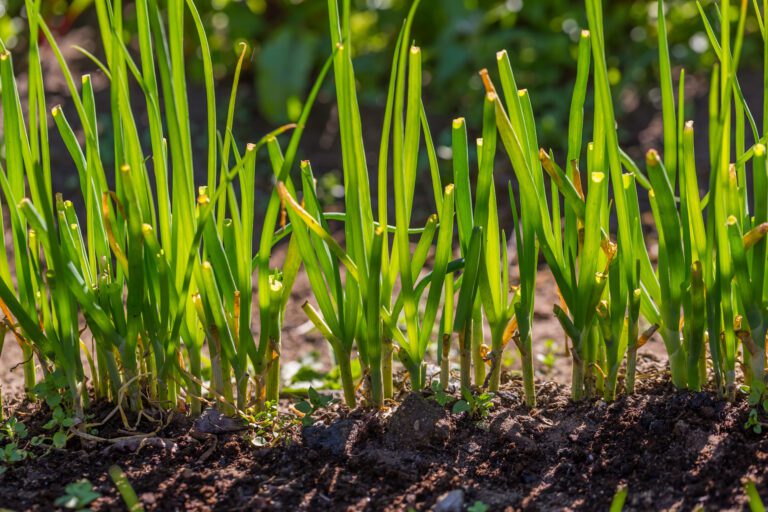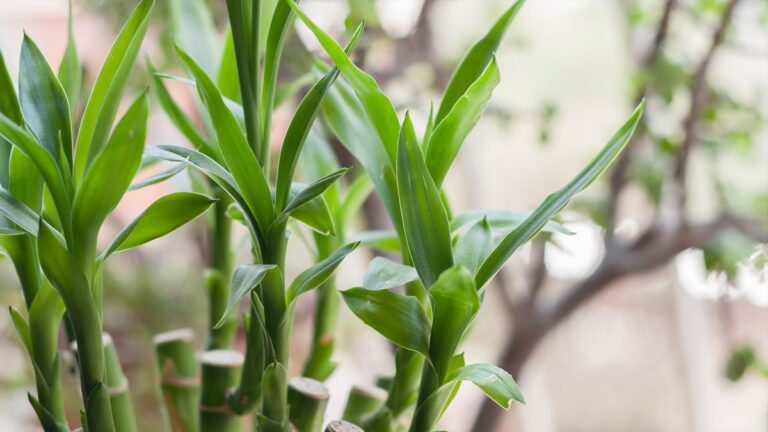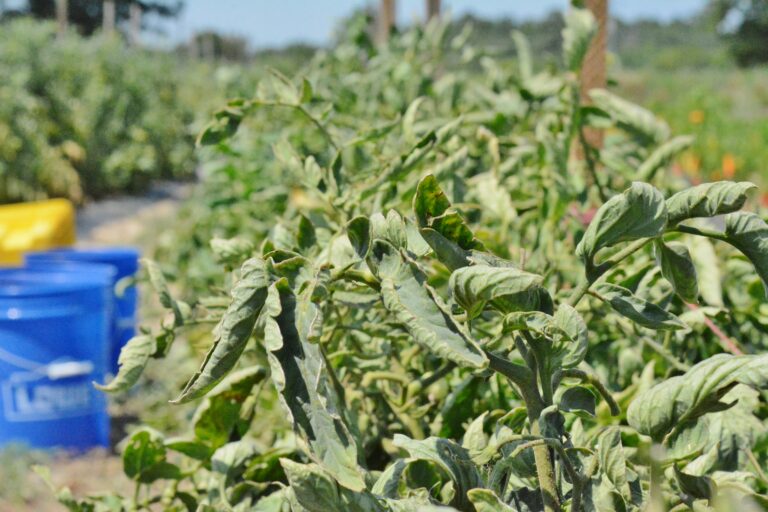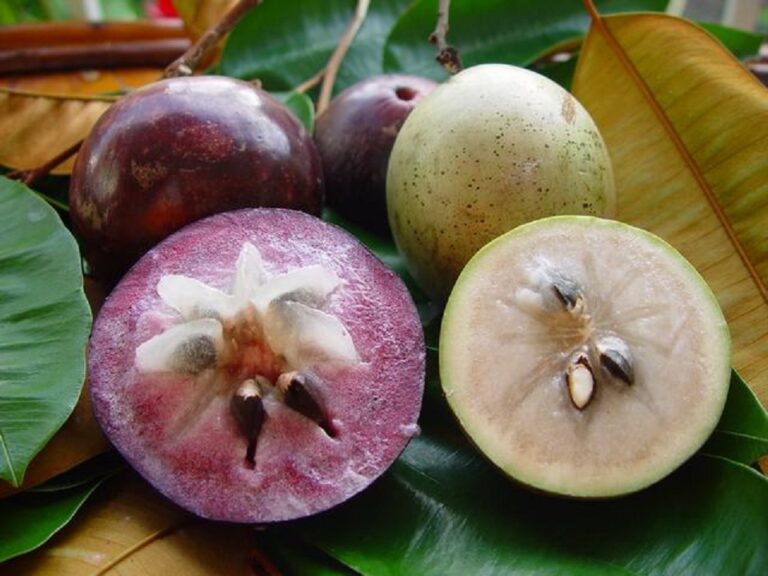I have successfully identified and controlled Leaf Rollers.
Leaf Rollers: Identification and Control
Leaf rollers are a common pest that can wreak havoc in gardens and agricultural fields. These insects, from the Lepidoptera order, have a unique behavior of rolling themselves inside leaves, causing damage to leaf surfaces and hindering plant growth. Identifying leaf roller infestations is crucial for effective control measures.
One of the telltale signs of a leaf roller infestation is the presence of rolled or folded leaves on plants. These rolled leaves often serve as protective shelters for the larvae of these pests. Upon closer inspection, you may find tiny caterpillars, about 1/4 to 1 inch in length, feeding inside the rolled leaves. These caterpillars can appear green, brown, or even striped, depending on the species. Additionally, you may also notice webbing or silk threads binding the rolled leaves together, a characteristic behavior exhibited by some species of leaf rollers. By promptly identifying these signs, gardeners and farmers can take necessary action to control and prevent further damage caused by these pests.
1. Understanding Leaf Rollers: An Overview of the Pests Affecting Plants
Leaf rollers are a common pest that can cause significant damage to plants. These pests belong to the family Tortricidae, which includes a wide range of species. Leaf rollers get their name from their distinctive behavior of rolling or folding leaves to create protective shelters. This behavior serves as a defense mechanism against predators and adverse weather conditions.
Leaf rollers primarily feed on the foliage of plants, leading to discoloration, distortion, and even death of the affected leaves. Some species show a preference for certain plant families, while others have a broader host range. This makes it important for gardeners and plant enthusiasts to be aware of the potential threat that leaf rollers pose to their beloved plants.
To truly understand leaf rollers and effectively manage their presence, it is crucial to delve into the various aspects of their biology, behavior, and ecology. By gaining a comprehensive overview of these pests, gardeners can develop informed strategies for prevention, detection, and control. In the following sections, we will explore the identification of leaf rollers, their life cycle, their impact on common plant species, and the different control methods available to address this formidable adversary. Through this knowledge, gardeners can take proactive steps to protect their plants and promote a thriving garden environment.
2. Identifying Leaf Roller Damage: Recognizing the Signs of Infestation
Leaf rollers are common pests that can cause significant damage to plants if left unchecked. Identifying the signs of leaf roller infestation is crucial in order to take appropriate control measures. One of the most obvious signs of leaf roller damage is the presence of rolled or folded leaves. These pests are adept at using silk threads to manipulate the leaves and create protective shelters for themselves. As a result, the leaves appear twisted and distorted, making it easy to spot their presence.
In addition to the distorted leaves, leaf rollers also leave behind telltale trails of silky webbing. These webs can be found on the surface of the leaves, connecting the rolled portions together. Keep an eye out for these webs, as they are a clear indication of leaf roller activity. Furthermore, inspect the undersides of the leaves, as leaf rollers often hide there during the day, seeking shelter from sunlight and predators. Look for small larvae or caterpillars that have a cylindrical body shape and a green or brown color, which are characteristic of leaf rollers. By recognizing these signs of leaf roller damage, you can take immediate action to protect your plants from further harm.
3. Life Cycle of Leaf Rollers: Understanding Their Development and Reproduction
Leaf rollers, scientifically known as Tortricidae, are insects that can cause significant damage to plants. Understanding the life cycle of leaf rollers is essential in effectively managing their presence in gardens or farms. Leaf rollers go through several stages during their development and reproduction.
The life cycle of leaf rollers begins with adult moths laying their eggs on the leaves of host plants. The eggs are usually laid in clusters and can be visible to the naked eye. Once the eggs hatch, tiny larvae emerge and begin feeding on the foliage. These larvae are responsible for the characteristic rolling or folding of the leaves, which offers them protection from predators and unfavorable weather conditions.
As the larvae grow, they undergo several molts before reaching maturity. During each molt, the larvae shed their exoskeleton, allowing for growth and development. The mature larvae eventually pupate, forming a cocoon or sheltered area where they undergo metamorphosis. After the pupal stage, adult moths emerge and the cycle continues.
Understanding the life cycle of leaf rollers is crucial for implementing timely control measures. By knowing the different stages of development, gardeners and farmers can target specific vulnerable periods and disrupt the reproductive cycle of these pests. Stay tuned for the next sections of this article, where we will explore common plant species affected by leaf rollers and effective prevention strategies to keep these pests at bay.
4. Common Plant Species Affected by Leaf Rollers: Which Plants are at Risk?
Leaf rollers are common pests that can affect a wide variety of plants. Some of the most commonly affected plant species include fruit trees such as apple, pear, and peach, as well as ornamental plants like roses, azaleas, and camellias. These plants are particularly susceptible to leaf roller infestations due to their tender foliage and succulent new growth.
In addition to fruit trees and ornamental plants, leaf rollers can also be a problem for vegetable crops such as tomatoes, peppers, and cabbage. The larvae of leaf rollers can cause significant damage by feeding on the leaves, buds, and fruit of these plants. This can lead to stunted growth, distorted foliage, and reduced yields. Therefore, it is important for gardeners and farmers to be vigilant and take appropriate measures to protect their plants from leaf roller infestations.
5. Leaf Roller Prevention: Effective Measures to Protect Your Plants
Leaf rollers can be a significant threat to the health and vitality of plants, but with effective prevention measures, their impact can be minimized. One of the most important steps in leaf roller prevention is to ensure the overall health and resilience of your plants. By providing optimal growing conditions, such as proper watering and fertilization, you can strengthen plants and make them less susceptible to infestations.
Another key aspect of leaf roller prevention is maintaining a clean and tidy garden environment. Regularly remove any fallen leaves or debris, as they can serve as hiding places and breeding grounds for these pests. Additionally, pruning affected branches and removing any rolled-up leaves can help reduce the presence of leaf rollers in your garden. By implementing these measures, you can create an environment that is less attractive to leaf rollers and reduce the likelihood of infestation.
6. Cultural Control Methods: Promoting Healthy and Resilient Plants
Cultural control methods play a crucial role in promoting the health and resilience of plants against leaf rollers. One of the most effective strategies is to maintain good sanitation practices in the garden. Regularly remove any fallen leaves, weeds, or debris that may serve as potential hiding spots or breeding grounds for leaf rollers. By minimizing their habitat, you can significantly reduce the chances of an infestation.
Furthermore, proper plant selection and placement can also contribute to the prevention of leaf rollers. Choose plant species that are known to be less susceptible to leaf roller damage and consider their specific environmental requirements. Additionally, spacing plants appropriately can help create better airflow and reduce humidity, making it less favorable for leaf rollers to thrive. Remember that a healthy and strong plant is less likely to attract pests, so providing optimal growing conditions through proper watering and fertilization is essential.
7. Monitoring Leaf Rollers: Techniques for Early Detection and Assessment
Early detection and assessment of leaf rollers is crucial in implementing effective control measures. By regularly monitoring your plants, you can identify the presence of leaf rollers before they cause extensive damage. There are several techniques that can aid in early detection and assessment.
Visual inspection is the most common method used for monitoring leaf rollers. Regularly inspect the foliage of your plants, paying close attention to the undersides of leaves and areas where leaf rollers are likely to hide. Look for signs such as curled or rolled leaves, webbing, frass (insect excrement), and eggs or larvae. It is important to note that leaf rollers may be more active during certain times of the day, so consider inspecting your plants in the early morning or evening when they are most active.
Another effective technique is the use of pheromone traps. These traps are designed to attract male leaf rollers with synthetic sex pheromones, which disrupts their mating behavior and helps in monitoring their population. By placing these traps strategically around your garden, you can determine the presence and population density of leaf rollers. Regularly check the traps and record the number of captured insects to gauge the severity of the infestation.
By incorporating these monitoring techniques into your gardening routine, you can detect leaf rollers at an early stage and take necessary control measures to protect your plants from extensive damage. Early detection not only helps in minimizing the use of pesticides but also improves the effectiveness of integrated pest management strategies. So, be vigilant in monitoring your plants and stay one step ahead in combating leaf rollers.
8. Natural Predators of Leaf Rollers: Encouraging Beneficial Insects in Your Garden
Natural predators play a crucial role in controlling leaf roller populations in gardens. These beneficial insects can help keep these pests in check without the need for chemical interventions. As a gardener, it is important to create an environment that encourages the presence of these natural predators.
One such predator is the parasitic wasps. These tiny wasps lay their eggs inside the body of leaf roller larvae. As the wasp larvae develop, they consume the leaf roller from the inside, eventually causing its death. Encouraging the presence of parasitic wasps can be done by planting nectar-rich flowers such as marigolds, zinnias, and daisies. These flowers attract adult parasitic wasps, providing them with a source of food and shelter. Additionally, avoiding the use of broad-spectrum insecticides can help protect these beneficial insects from unintentional harm.
9. Chemical Control Options: When and How to Use Pesticides Safely
Chemical control options can be an effective solution for managing leaf roller infestations in a garden or agricultural setting. When considering the use of pesticides, it is important to prioritize safety and use them responsibly. Always carefully read and follow the instructions provided by the manufacturer to ensure proper application and minimize any potential risks.
Before applying any pesticides, it is essential to accurately identify the leaf roller species and understand their life cycle. This information will help determine the most appropriate timing for pesticide application, ensuring maximum effectiveness. Additionally, it is crucial to choose the right pesticide formulation and mode of application for the specific leaf roller species and the plants being treated.
When selecting a pesticide, opt for products that are specifically designed for leaf roller control, as they are more likely to target the pest effectively while minimizing harm to beneficial insects and the environment. It is also important to consider the formulation of the pesticide, such as whether it is a liquid, granular, or aerosol. This choice will depend on the level of infestation, the size of the area being treated, and the type of plants involved.
In the next section of this article, we will explore additional factors to consider when using chemical control options for leaf roller management, including safety precautions and alternative measures to integrate into a comprehensive pest management plan.
10. Integrated Pest Management: A Holistic Approach to Leaf Roller Control
Integrated Pest Management (IPM) offers a holistic approach to leaf roller control, focusing on long-term solutions that minimize the use of chemical pesticides. By incorporating various strategies, gardeners can effectively manage leaf roller infestations while maintaining the overall health and balance of their gardens.
One key aspect of IPM is prevention. By implementing cultural practices that promote healthy plants, such as proper watering, adequate fertilization, and regular pruning, gardeners can create an environment that is less susceptible to leaf roller infestations. Additionally, selecting plant species that are less prone to leaf roller damage can further reduce the risk. This proactive approach not only helps prevent infestations but also contributes to the overall resilience of the garden ecosystem.
11. Physical Barriers: Using Netting and Traps to Prevent Leaf Roller Infestations
Physical barriers such as netting and traps are highly effective in preventing leaf roller infestations in plants. By creating a physical barrier, gardeners can effectively deter these pests and protect their plants from damage. Netting is particularly useful in preventing adult leaf rollers from laying their eggs on plants. The fine mesh of the netting acts as a barrier, preventing the adult moths from accessing the plants and laying their eggs. This prevents the eggs from hatching and reduces the overall population of leaf rollers in the garden.
Traps, on the other hand, are designed to capture adult leaf rollers and prevent them from mating and reproducing. These traps are usually baited with pheromones that attract the adult moths. Once the moths enter the trap, they are unable to escape, thus preventing them from laying eggs and causing further damage to plants. Traps are particularly effective when used in conjunction with other control methods, such as netting, as they help reduce the overall population of leaf rollers and minimize the risk of infestation. By incorporating physical barriers like netting and traps into their pest management strategies, gardeners can proactively protect their plants from leaf roller infestations and ensure their continued health and vigor.
12. Pruning Techniques: Managing Leaf Rollers through Proper Plant Maintenance
Pruning techniques play a vital role in managing leaf rollers and promoting overall plant health. By implementing proper plant maintenance practices, gardeners can effectively reduce the impact of leaf roller infestations.
One important aspect of pruning is the removal of heavily infested or damaged branches. This helps to eliminate the source of the leaf rollers and prevents the pests from spreading to other parts of the plant or neighboring plants. It is crucial to perform this task carefully, using sanitized pruning tools to avoid further damage and the transmission of diseases. By cutting back and removing affected branches, gardeners can limit the population of leaf rollers and protect the overall vitality of the plant.
Another pruning technique to manage leaf rollers is the removal of excessive foliage. Leaf rollers are notorious for finding shelter within dense vegetation, making it difficult to reach them with other control methods. Thinning out the foliage allows greater airflow and sunlight penetration, creating an environment that is less favorable for the pests. Moreover, it increases visibility, making it easier to detect leaf roller activity and take appropriate action. Proper pruning techniques can significantly aid in the control of leaf rollers, providing a proactive approach to managing infestations and maintaining healthy plants.
13. Organic Remedies: Safe and Environmentally Friendly Solutions for Leaf Roller Control
Organic remedies can provide safe and environmentally friendly solutions for controlling leaf rollers in your garden. These methods prioritize the use of natural ingredients and techniques that are effective in deterring and managing leaf roller infestations without harming beneficial insects or endangering the environment.
One effective organic remedy for leaf roller control is the use of botanical insecticides. Products containing neem oil or pyrethrins derived from chrysanthemum flowers can be an excellent choice. These insecticides disrupt the feeding and reproductive behaviors of leaf rollers, effectively reducing their population. Additionally, these organic options have low toxicity to humans and pets, making them a safe choice for home gardeners.
Another organic remedy worth considering is the use of beneficial insects. Encouraging the presence of natural predators like ladybugs and lacewings in your garden can help control leaf roller populations naturally. These predators feed on the larvae of leaf rollers, preventing them from causing further damage to your plants. Introducing these beneficial insects to your garden can be done through purchased larvae or by creating suitable habitats that attract them, such as providing diverse plant species and offering food sources like nectar-producing flowers.
Incorporating these organic remedies into your leaf roller control strategy allows you to effectively manage infestations while maintaining a safe and sustainable gardening environment. By choosing natural options, you not only protect your plants but also support the overall health of your garden ecosystem.
14. Timing is Key: Understanding the Optimal Periods for Leaf Roller Control Measures
Timing is a crucial factor when it comes to effectively controlling leaf rollers. Understanding the optimal periods for implementing control measures can significantly improve the success rate of managing these pests. It is important to note that leaf rollers have specific life cycles and behaviors that influence the timing of control measures.
One key aspect to consider is the developmental stages of leaf rollers. These pests typically go through four main stages: egg, larva, pupa, and adult. The most vulnerable stage is the larval phase, as this is when leaf rollers cause the most damage to plants. Therefore, it is recommended to focus control efforts during this period to minimize the impact on the plants and maximize the effectiveness of the control methods employed. Furthermore, monitoring the timing of adult emergence can also be beneficial, as it allows for targeted treatments that disrupt their reproduction cycle. By timing control measures with precision, gardeners and plant enthusiasts can effectively combat leaf roller infestations and protect their plants from potential damage.
15. Case Studies: Real-life Examples of
Case Studies: Real-life Examples of
1. In a case study conducted in a home garden, the presence of leaf rollers was discovered on several tomato plants. Observations revealed curling and rolling of the leaves, along with the characteristic webbing associated with these pests. The infestation occurred during the peak growing season, causing concern among the gardeners. Prompt action was taken, and a combination of cultural control methods and natural predators was introduced. Through regular monitoring and implementation of integrated pest management techniques, the leaf roller population was successfully reduced, resulting in healthier tomato plants and a significant decrease in leaf roller damage.
2. Another case study took place in a commercial orchard where leaf rollers affected a variety of fruit trees, including apple, pear, and cherry. The infestation was observed in early spring, and the orchard manager sought immediate control measures to prevent serious crop loss. Chemical control options were carefully considered, and a targeted spray program was implemented, utilizing specific pesticides with minimal impact on beneficial insects. Regular monitoring and proper timing of pesticide applications were crucial in managing the leaf roller population. The case study demonstrated the effectiveness of using chemical control as part of an integrated approach, resulting in healthy fruit trees and a successful harvest.
What are some real-life examples of leaf roller infestations?
Leaf roller infestations have been observed in various plant species, including apple orchards in Washington state, vineyards in California, and tomato plants in backyard gardens.
Can leaf rollers be controlled without the use of pesticides?
Yes, leaf rollers can be managed using cultural control methods, natural predators, physical barriers, and organic remedies, which reduce the reliance on chemical control options.
How can I identify leaf roller damage on my plants?
Leaf roller damage can be recognized by the presence of rolled or folded leaves, webbing, skeletonized foliage, and the presence of caterpillars or their excrement.
Which plants are most at risk of leaf roller infestations?
Leaf rollers commonly affect a wide range of plants, including apple trees, grapevines, roses, citrus trees, tomato plants, and various ornamental shrubs and trees.
What is integrated pest management (IPM) and how does it apply to leaf roller control?
Integrated pest management is a holistic approach that combines various control methods to effectively manage pest populations, including leaf rollers. It emphasizes the use of multiple strategies, such as cultural control, natural predators, and targeted pesticide use when necessary.
Are there any natural predators that can help control leaf roller populations?
Yes, natural predators such as parasitic wasps, lacewings, birds, spiders, and predatory insects like ladybugs can help keep leaf roller populations in check by preying on their eggs and larvae.
How can I prevent leaf roller infestations in my garden?
Leaf roller prevention can be achieved by practicing good garden hygiene, removing affected plant material, promoting plant health through proper watering and fertilization, and implementing physical barriers like netting or traps.
When is the optimal period for implementing leaf roller control measures?
The optimal period for leaf roller control measures depends on the specific plant species and region. Generally, it is recommended to monitor and take action during the early stages of leaf roller infestations, typically in spring or early summer.
What are some effective chemical control options for leaf rollers?
If necessary, targeted pesticide applications can be used to control leaf rollers. However, it is important to follow the instructions carefully and use pesticides safely and responsibly.
How can pruning techniques help manage leaf rollers?
Pruning techniques, such as removing and disposing of affected plant parts, can help manage leaf rollers by reducing their population and removing potential nesting sites.
Are there any organic remedies for leaf roller control?
Yes, organic remedies such as neem oil, insecticidal soaps, and Bacillus thuringiensis (BT) can be used to control leaf rollers in an environmentally friendly manner. These options are safe for plants, beneficial insects, and the surrounding ecosystem.
What are some effective monitoring techniques for early detection of leaf rollers?
Monitoring leaf rollers can be done by regularly inspecting plants for signs of infestation, using pheromone traps to capture adult moths, and employing sticky traps to catch the larvae.
Should I be concerned about leaf rollers affecting my fruit trees?
Leaf rollers can cause significant damage to fruit trees by reducing fruit quality and yield. Therefore, it is important to implement proper leaf roller control measures to protect your fruit trees.
Can leaf roller infestations be completely eradicated?
While it may be difficult to completely eradicate leaf roller infestations, with proper management and control measures, their populations can be significantly reduced, minimizing damage to plants. Regular monitoring and timely interventions are key to successful control.






